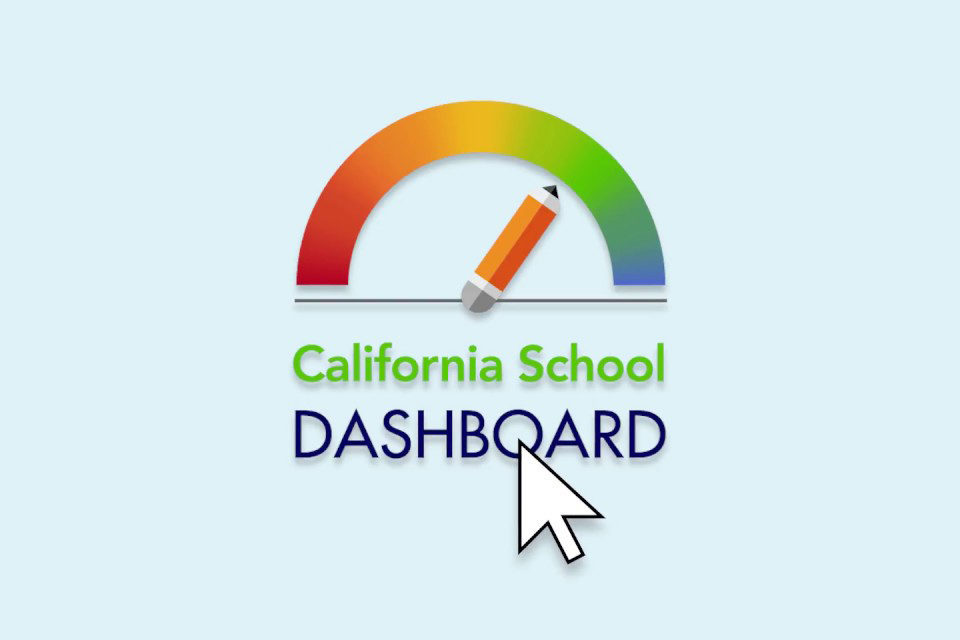The 2023 California School Dashboard, released by the state Department of Education on Dec. 15, reports performance measures for schools and local educational agencies on multiple state and local indicators. This year marks a return to the color-coded ratings after years of only displaying current year, or status only, data due to the COVID-19 pandemic. LEAs and schools receive one of five color-coded performance levels on the state indicators. From highest to lowest, the five performance levels are: Blue, Green, Yellow, Orange and Red. The color rating is generated using current year results (status) plus the change in performance from the previous year (change). Results are available for individual schools and districts, as well as statewide averages. Data is further disaggregated by student groups at all levels.
State indicators are based on data collected consistently across the state from LEAs through the California Longitudinal Pupil Achievement Data System and testing vendors. The state indicators are: Academic Performance Indicators (reported separately for English language arts/literacy (ELA) and mathematics assessments), Chronic Absenteeism, Graduation Rate, English Learner Progress, Suspension Rate and College/Career (the only indicator without a color status).
Statewide results from the California Assessment of Student Performance and Progress (CAASPP) for ELA and Mathematics were released in October this year. This Academic Performance Indicator data is incorporated into the Dashboard by measuring performance through distance from meeting the standard and whether the participation of 95 percent of students enrolled was met. The statewide average for ELA and math is Orange. For ELA, the average is equivalent to 13.6 percent below standard, a decrease of 1.4 percent from 2021–22, and 49 percent below standard in math, an increase of 2.6 points from the previous year.
Statewide, the Chronic Absenteeism Indicator, which only applies to grades K-8, showed all 13 student groups in Yellow, with 24.3 percent of students chronically absent, an improvement from 30 percent in 2021–22.
The English Learner Progress Indicator (ELPI) represents the percentage of English learner students who are progressing toward English language proficiency using results from statewide testing. For 2022–23, the ELPI is Yellow, with 48.7 percent making progress, about 1.5 percent fewer students than in the previous year.
The statewide Suspension Rate Indicator is Orange, with 3.6 percent of students suspended in 2022–23, an increase of 0.4 percent from 2021–22.
The combined four- and five-year Graduation Rate Indicator for 2022–23 dropped by 1 percentage point to 86.4 percent of students, with an increase of almost 1,000 additional students meeting A-G requirements and similar increases in students earning the State Seal of Biliteracy and the Golden State Seal Merit Diploma. Presenting staff noted that the slight decrease could be due to the expiration of accommodations provided during the pandemic.
For the 2022–23 Dashboard, just one year of data for the College and Career Readiness Indicator is being reported, so no color rating has been assigned. Instead, the indicator is ranked at the Medium level, with 43.9 percent of students deemed prepared for postsecondary success.
Local indicators available at the LEA and school levels include Basic Services and Conditions (Priority 1), Implementation of State Academic Standards (Priority 2), Parent and Family Engagement (Priority 3), School Climate, as measured by a local climate survey (Priority 6), Access to a Broad Course of Study (Priority 7), Outcomes in a Broad Course of Study (Priority 8) and for county offices of education only, Coordination of Services for Expelled Youth (Priority 9) and Coordination of Services for Foster Youth (Priority 10).
Differentiated assistance
Eligibility for differentiated assistance is based on either: 1) student group performance in two or more state indicators, 2) performance on local indicators in two or more priority areas, or 3) a combination of student group and local indicator performance in two or more priority areas. In 2022–23, 219 LEAs exited differentiated assistance, while 68 LEAs became eligible, for a total of 466 qualified LEAs, compared to 617 in 2021–22. Staff attributed much of this movement out of differentiated assistance to improvements in chronic absenteeism.
Changes to differentiated assistance beginning with this data release include two years of differentiated assistance for identified LEAs — an increase of one year — and the first time since 2019 that charter schools have been included as eligible LEAs for differentiated assistance. The eligibility criteria for charter schools is the same as districts/COEs, except charter schools are required to meet criteria in two or more years.
Disaggregated data
While statewide results show promising trends, with some indicators improving and others maintaining the status quo, there are still some alarming results when looking at individual student groups. Nine of the 13 student groups are in the Red or Orange performance levels for ELA. English learners saw the largest decline in ELA, dropping 6.5 points from the previous year. Foster youth received red performance levels across ELA, mathematics, graduation rates and low college and career readiness. They were 127.4 points below standard in mathematics, the furthest of any student group. Similarly, African American students, students with disabilities, and students experiencing homelessness received all Orange or Red levels in the same categories.
Some student groups did see moderate improvements compared to prior years. For instance, students with disabilities, American Indian students, students who are socioeconomically disadvantaged, and Filipino students all had substantial increases in their scores in mathematics. Asian American and Filipino students scored highly across all indicators. Despite these modest increases, significant gaps persist, and many student groups are still severely below the standard in the state’s performance indicators.





